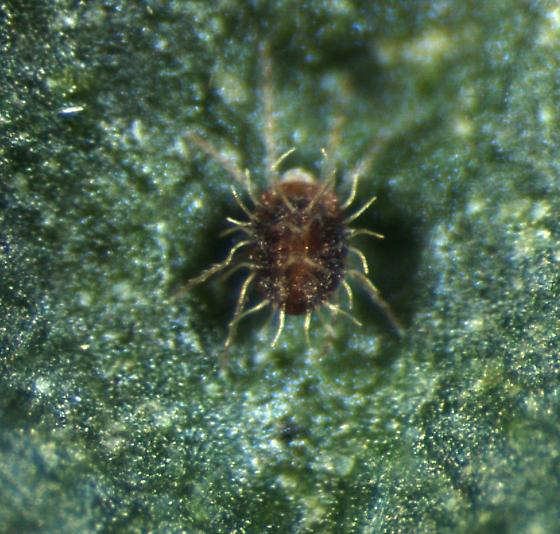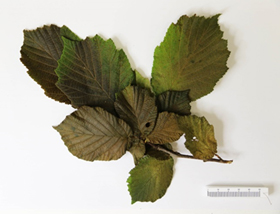
Hazelnut mite
| Primefact number | Edition | Published | Author |
|---|---|---|---|
| 1453 | First | Mar 2016 | Plant Biosecurity and Product Integrity |


Hazelnut mite (Tetranycopsis horridus) was identified for the first time in Australia in January 2016. The mites were discovered on established hazelnut trees in Victoria’s north east and have since been identified on a number of commercial and non‑commercial properties stretching to the Dandenong Ranges.
Surveillance carried out in NSW in February 2016 confirmed the presence of hazelnut mite in NSW.
Although these are the first detections of hazelnut mite in Australia, its widespread distribution and the lack of visual symptoms in some infestations suggests that the mite may have been present in Australia for some time.
Little research on hazelnut mite has been undertaken and information on the pest is scarce. Hazelnut mites have been reported overseas as destructive to some economic crops, including hazelnuts and walnuts.
Notifiable status
Hazelnut mite (Tetranycopsis horridus) is not a notifiable plant pest in NSW.
A full list of notifiable plant pests and diseases can be found in Schedule 2 of the NSW Biosecurity Act 2015.
Description
Adults
To the naked eye, hazelnut mites appear as tiny moving dots. Adults are less than 0.5 mm long.
When viewed through a microscope, adults have eight legs, an oval body and are brownish black in colour. The body is covered in fine spines, or hairs, giving the mite a ‘spiky’ appearance (Figure 1).
Hazelnut mites are found mostly on the underside of host leaves but will move to the upper surface when the population rises to high densities throughout summer.
Immature stages
Hazelnut mite eggs are red in colour and are invisible to the naked eye.
Damage
Light infestations of hazelnut mite do not show obvious symptoms in host plants. As mite numbers increase, detection becomes easier.
Hazelnut mites attack host leaves, both young and mature, by puncturing plant cells and feeding on the contents. The feeding causes symptoms of conspicuous white or yellowish feeding spots on the upper leaf surface. An uncontrolled infestation can cause whole leaves to die and appear as if burnt (Figure 2).
Loss of leaf surface reduces the plants’ ability to provide energy for developing nuts.
Lifecycle
Hazelnut mite populations are mostly females that reproduce asexually through parthenogenesis.
One female mite can start a new population regardless of whether she has mated or not.
Up to five generations can occur in one year. In warmer climates mites may remain active year round. In cooler climates, mites will overwinter as eggs that hatch early in spring.
Spread
Long distance spread of mites can occur on clothes and when infested plant material or equipment is moved. Mites tend to be associated with plant leaves but may spread to fruit when leaves become overcrowded.
Hazelnut mites are classified in the spider mite family (Tetranychidae). Spider mites are known to walk short distances within and between plants and some species have the ability to move over greater distances by producing ‘parachutes’ of silk thread to carry them on wind currents.
Hosts
Hazelnut (Corylus avellana) and walnut (Juglans regia) are important economic hosts of hazelnut mite, with some varieties appearing to be more susceptible than others.
Other species that have been reported to host hazelnut mite include alder (Alnus species), common hornbeam (Carpinus betulus), filbert (Corylus maxima), hazels (Corylus species), yarrow (Achillea species), Thuja species, oak (Quercus species), spruce (Picea glauca), pines (Pinus species) and musk willow (Salix aegyptiaca).
Distribution
Hazelnut mite is broadly distributed in Europe from Spain to western Russia and south to Iran. Hazelnut mite is also present in the USA and China.
Actions to minimise risk
Put in place biosecurity best practice actions to prevent entry, establishment and spread of pests and diseases:
- practice “Come clean, Go clean”
- ensure all staff and visitors are instructed in and adhere to your business management hygiene requirements
- monitor your crop regularly
- source plant material of a known high health status from reputable suppliers
- keep records

